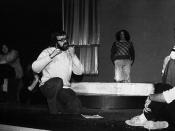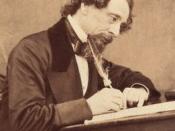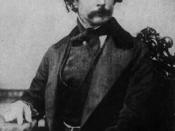Hard Times by Dickens, Structure as it Relates to Plot and Characterixation Charles Dickens presents in his novel a specific structure to expose the evils and abuses of the Victorian Era. Dickens' use of plot and characterization relate directly to the structure on account that it shows his view of the mistreatments and evils of the Victorian Era, along with his effort to expose them through literary methods. A befitting display of structure is evident through his giving name to the three books contained in Hard Times. The titles of the three appropriately named books are an allusion to the Bible.
In the first book, titled "Sowing, " we are introduced to those that Dickens creates a firm character basis with. The opening chapter emphasizes on Thomas Gradgrind Sr., and his students fittingly referred to as "little pitchers before him, who were to be filled so full of facts." (Dickens 10).
Gradgrind's methods of education are employed to show Dickens' view on the evil of the educational system. Among the "little pitchers" are Bitzter and Sissy Jupe. They exemplify two entirely different ideas, serving Dickens for allegorical purposes.
Bitzer, the model student of Gradgrind's school of "facts, facts, facts" becomes the very symbol of evil in the educational system that Dickens is trying to portray, as he learns to take care for number one, himself. Reflection of this and Bitzer's informative definition of a horse, as a child in book one, occurs in book three as he speaks of the necessity of apprehending Tom Gradgrind Jr. Sissy represents what Dickens is attempting to foster a desire for in the reader, imagination. This is an aspect that the other children lack or are reprimanded for possessing.
Another character introduced to the reader is Josiah Bounderby, an acknowledged, self-made man. Following...


